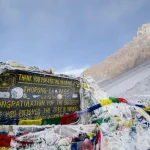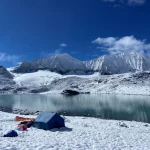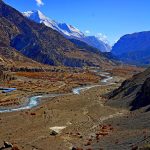Thorong La Pass: Nepal’s Ultimate High-Altitude Trek on the Annapurna Circuit
Thorong La Pass, soaring at 5,416 meters (17,769 feet), is the pinnacle of the Annapurna Circuit trek, one of Nepal’s most iconic trekking routes.
This high-altitude mountain pass connects Manang and Muktinath, bridging the Marsyangdi and Kali Gandaki river valleys in the heart of the Annapurna massif. Renowned for its challenging ascent and breathtaking views, Thorong La Pass offers trekkers an unforgettable adventure in Nepal’s Himalayas, blending physical endurance with cultural and spiritual depth.
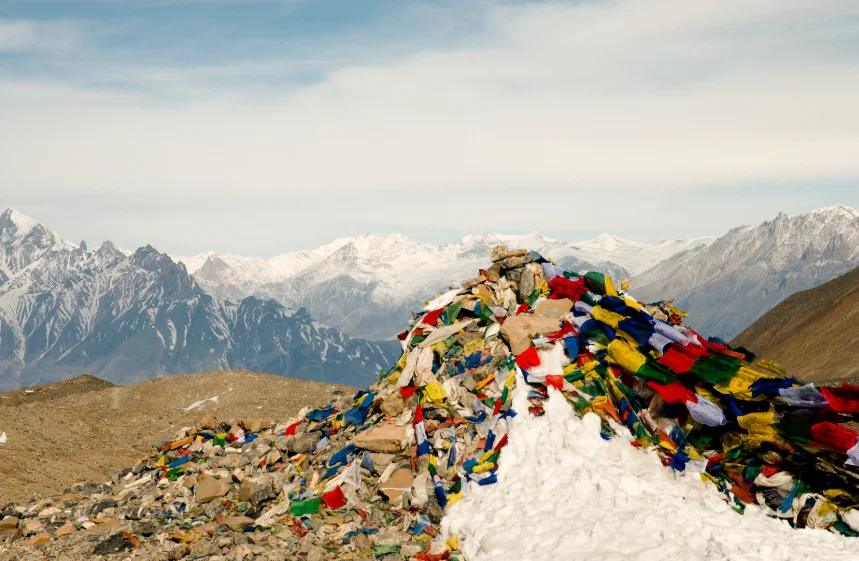
Geographic Significance of Thorong La Pass
The Thorong La Pass crossing is one of the world’s highest trekking passes accessible to non-technical hikers, offering unparalleled views of the Annapurna, Dhaulagiri, and Thorong Peak ranges. This ancient trade route, used for centuries by traders and pilgrims, links the arid, Tibetan-influenced landscapes of Manang with the temperate Mustang region.
The pass divides distinct climatic and cultural zones, with Manang’s Buddhist gompas and barley fields contrasting Muktinath’s sacred Hindu and Buddhist pilgrimage sites, creating a rich tapestry of Himalayan heritage.
The pass’s high-altitude setting amidst snow-capped peaks and rugged terrain makes it a bucket-list destination for trekkers seeking both adventure and cultural immersion in Nepal’s Annapurna region.
The Thorong La Pass Trekking Experience
Thorong La Pass trek follows the Annapurna Circuit, typically starting from Besisahar or a roadhead near Manang. Acclimatization is critical, with trekkers spending at least two nights in Manang (3,519m) to adjust to the altitude. The final push involves staying at Thorong Phedi (4,450m) or High Camp (4,925m) before a pre-dawn ascent to the pass. The climb from High Camp, lasting 2–3 hours, navigates loose scree and potential snow, culminating in a triumphant arrival at the summit marked by vibrant prayer flags.
The descent to Muktinath, dropping over 1,600 meters, is equally demanding, requiring strong knees and trekking poles. The journey offers stunning views of the Kali Gandaki Valley and opportunities to spot Himalayan wildlife, such as blue sheep, along the trail.
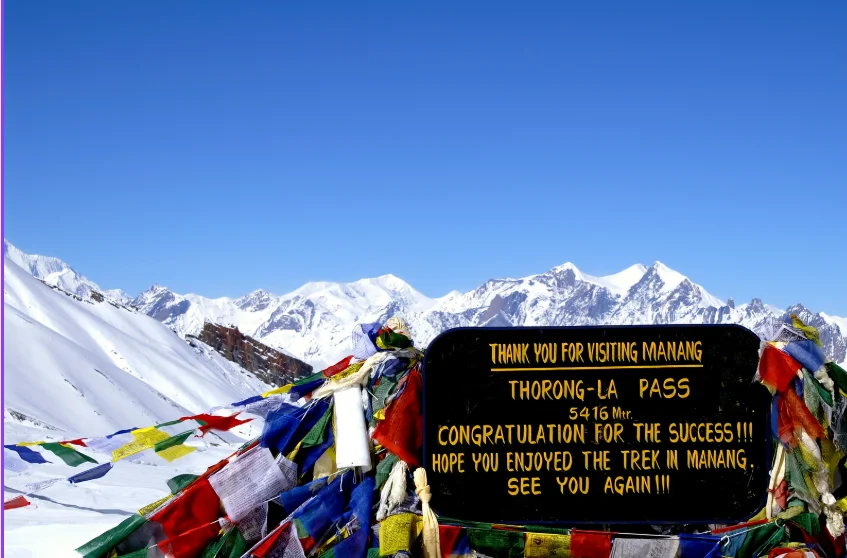
Best Time to Cross Thorong La Pass
The best time to cross Thorong La Pass is during pre-monsoon (March to May) and post-monsoon (September to November) seasons, when stable weather ensures safer trails and clear mountain views. Spring offers warming temperatures and blooming wildflowers at lower elevations, though snow may linger at the pass until April.
Autumn provides crisp air and optimal visibility of peaks like Annapurna I (8,091m), making it the preferred season for Thorong La Pass trekkers. Winter (December to February) brings heavy snow and avalanche risks, often closing the pass, while the monsoon (June to August) creates muddy trails and poor visibility, unsuitable for crossing.
Altitude Challenges and Safety Precautions
Thorong La Pass altitude sickness is a significant risk due to the rapid elevation gain to 5,416m. Symptoms like headaches, nausea, and fatigue can affect even fit trekkers, so proper acclimatization in Manang and Thorong Phedi is essential. Staying hydrated, ascending gradually, and carrying AMS medications like Diamox are critical.
Trekkers should recognize severe symptoms, such as confusion or shortness of breath, and be prepared to descend immediately. Emergency gear, including first-aid kits, headlamps, and satellite phones, is vital, as weather can shift rapidly, bringing whiteout conditions or extreme cold.
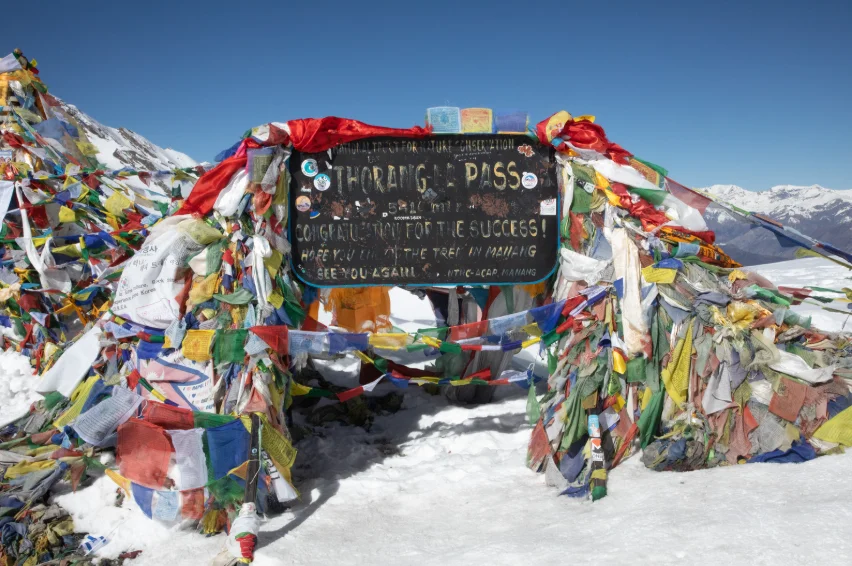
Cultural and Spiritual Significance
The Thorong La Pass pilgrimage route is steeped in spiritual significance, connecting to the sacred Muktinath Temple, a revered site for Hindus and Buddhists. For over a millennium, pilgrims, traders, and locals have crossed the pass, leaving prayer flags at the summit as offerings for safe passage. Muktinath, where Hindus honor Lord Vishnu and Buddhists revere Guru Rinpoche, adds a profound spiritual dimension to the Thorong La Pass trek, enriching the journey with cultural heritage.
Preparation and Training for Thorong La Pass
Thorong La Pass preparation requires months of training, focusing on cardiovascular endurance, leg strength, and stamina through hiking with weighted packs, running, and stair climbing. While prior high-altitude experience is helpful, beginners with proper fitness can succeed with guided support.
Essential gear includes a four-season sleeping bag rated for -15°C, high-altitude trekking boots, layered clothing, trekking poles, and a comprehensive first-aid kit. Headlamps, warm gloves, and emergency bivvy sacks are crucial for the early morning ascent in potentially freezing conditions.
Environmental Conservation and Sustainable Trekking
The Annapurna Conservation Area protects the delicate ecosystem around Thorong La Pass, home to species like Himalayan tahr and snow leopards. Rising trekker numbers contribute to waste, trail erosion, and resource strain. Trekkers must follow Leave No Trace principles, packing out all waste and using fuel-efficient cooking methods.
Climate change, including glacial retreat and shifting weather patterns, affects trail conditions and water availability. Choosing eco-friendly operators and supporting local conservation efforts ensures Thorong La Pass remains a pristine destination for future trekkers.
Book this trek from HERE.
Conquering Thorong La Pass is a life-changing adventure, blending physical challenge, cultural immersion, and spiritual significance. Prepare thoroughly, respect altitude risks, and adopt eco-friendly practices for an unforgettable Nepal trekking experience on the Annapurna Circuit.
